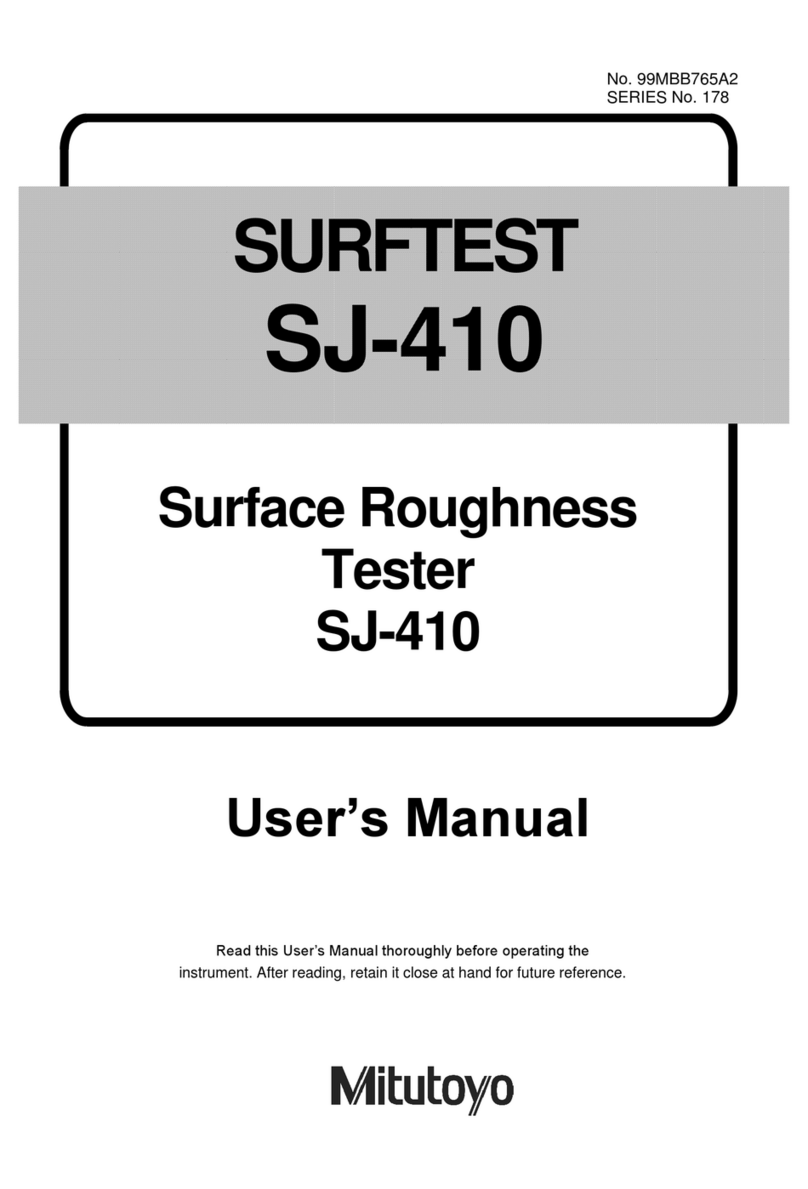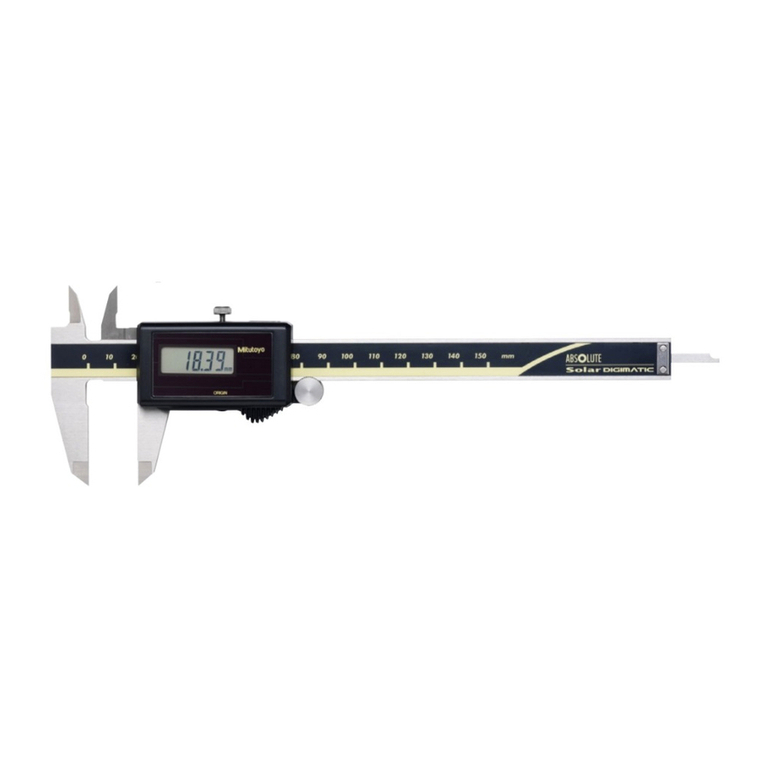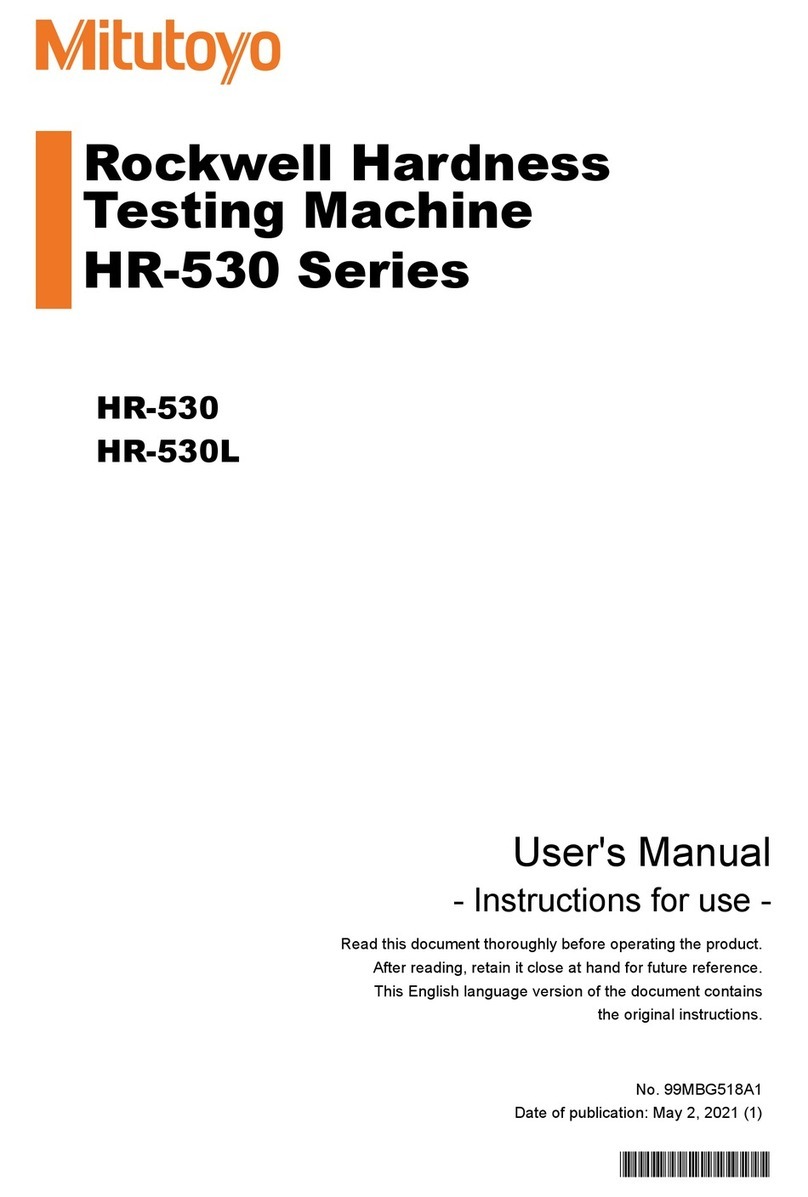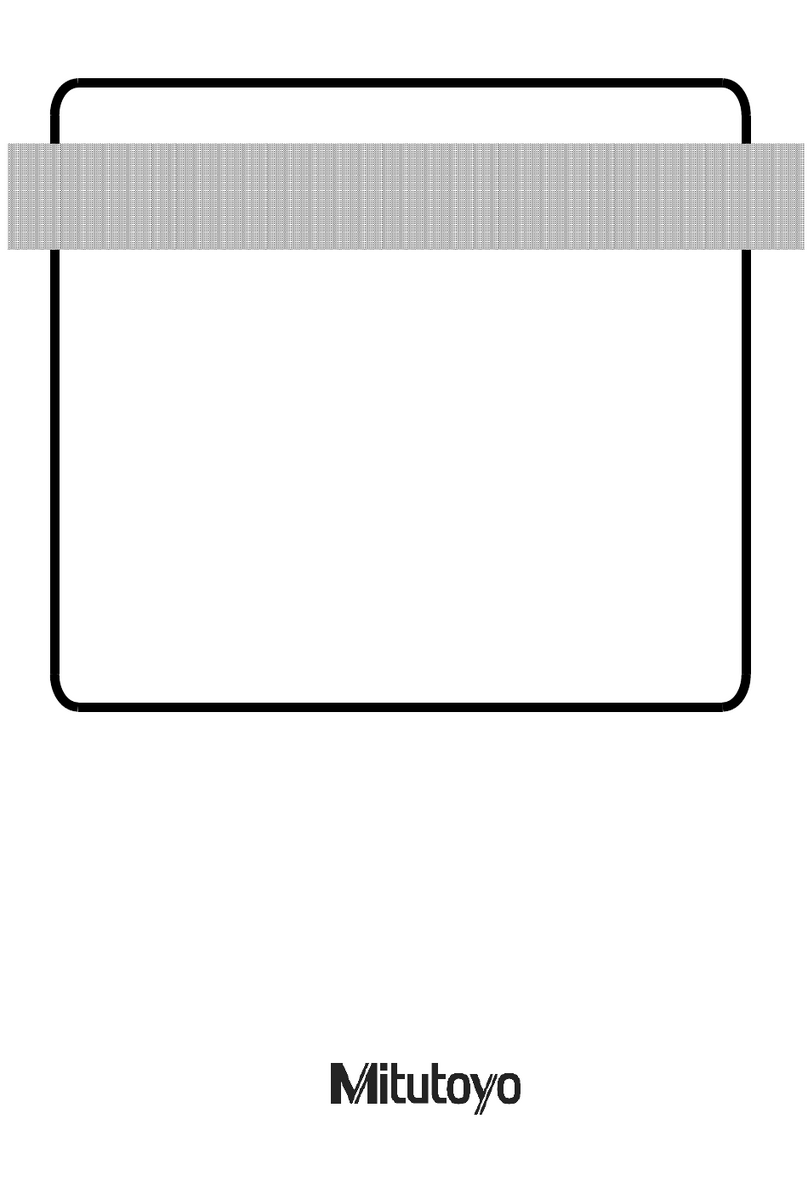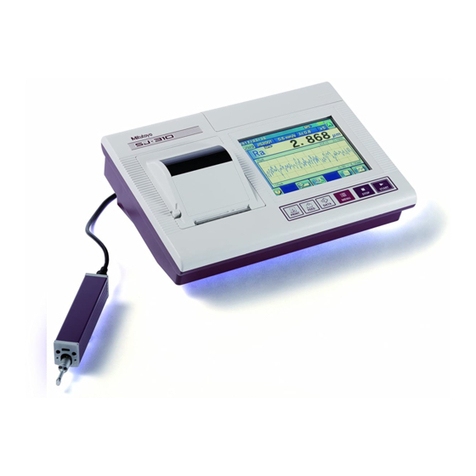
No. 99MBB091A
14.5 Definitions of the SJ-301 Roughness Parameters ................................... 14-18
14.5.1 Arithmetic mean deviation of the profile, Ra ............................... 14-18
14.5.2 Root-mean-square deviation of the profile, Rq ........................... 14-18
14.5.3 Maximum height of the profile, Ry (JIS’82, JIS’94)..................... 14-19
14.5.4 Ten-point height of irregularities, Rz (JIS’82, JIS’94) ................. 14-20
14.5.5 Maximum height of the profile, Ry (DIN, ANSI) .......................... 14-21
14.5.6 Maximum height of the profile, Rz (DIN, ISO, ANSI, JIS’01) ..... 14-21
14.5.7 Maximum profile height, Rp (DIN, ISO, JIS’94, JIS’01) .............. 14-21
14.5.8 Maximum profile valley depth, Rv (DIN, ISO, JIS’94, JIS’01)..... 14-22
14.5.9 Total height of the profile, Rt....................................................... 14-22
14.5.10 Skewness of the profile, Sk......................................................... 14-22
14.5.11 Kurtosis of the profile, Ku ............................................................ 14-23
14.5.12 Arithmetic mean slope of the profile, Da..................................... 14-23
14.5.13 Root-mean-square slope of the profile, Dq ................................. 14-23
14.5.14 Mean width of the profile elements, Sm (JIS, ISO, DIN) ............ 14-24
14.5.15 Peak count, Pc (JIS, ISO, DIN)................................................... 14-24
14.5.16 Peak count, Ppi (JIS, ISO, DIN).................................................. 14-24
14.5.17 Material ratio of the profile, mr[c]
(tp= material ratio of the profile).................................................. 14-25
14.5.18 Material ratio of the profile, mr .................................................... 14-25
14.5.19 Profile section height difference (plateau ratio), dc..................... 14-26
14.5.20 Material ratio curve of the profile (Abbott Firestone curve),
BAC.............................................................................................. 14-26
14.5.21 Profile height amplitude curve, ADC ........................................... 14-27
14.5.22 Core roughness depth, Rk
(Depth of the roughness core profile) ......................................... 14-28
14.5.23 Reduced peak height, Rpk
(Average height of the protruding peaks above the roughness
core profile).................................................................................. 14-28
14.5.24 Reduced valley depth, Rvk
(Average depth of the profile valleys projecting through the
roughness core profile)................................................................ 14-28
14.5.25 Material portion, Mr1.................................................................... 14-28
14.5.26 Material portion, Mr2.................................................................... 14-28
14.5.27 Peak area, A1.............................................................................. 14-28
14.5.28 Valley area, A2 ............................................................................ 14-28
14.5.29 Measuring volume Vo.................................................................. 14-29
14.5.30 Mean peak-to-valley height points, R3z ...................................... 14-29
14.5.31 Mean spacing of local peaks of profile, S ................................... 14-30
14.5.32 Developed profile length Lo......................................................... 14-30
14.5.33 High spot count, HSC.................................................................. 14-31
14.6 Parameters Related With Motif................................................................. 14-32
14.6.1 How to obtain roughness motifs.................................................. 14-32
14.6.2 Roughness motif parameters ...................................................... 14-35
14.6.2.1 R .................................................................................... 14-35
14.6.2.2 AR.................................................................................. 14-35
14.6.2.3 Rx .................................................................................. 14-35
14.6.3 How to obtain waviness motifs.................................................... 14-35
viii












